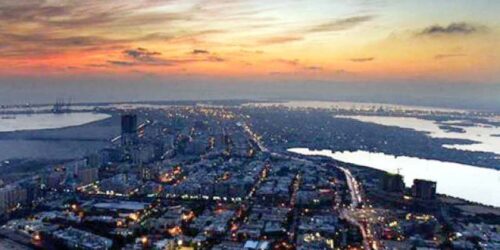The National Accounts Committee (NAC) came up with a GDP growth figure of 3.94% for FY21, which is based on provisional figures for the first nine months of the fiscal year.
This news sparked debate between the government and opposition parties. The government is claiming that this achievement is the result of timely fiscal and monetary accommodation with the Covid-19 outbreak in Pakistan.
In addition, the announcement and implementation of construction package played a significant role in bringing a V-shaped recovery.
Even some ministers are of the opinion that the first two years of economic slowdown were the result of economic follies and mismanagement of the previous government and now the economy is on the path of growth.
On the contrary, opposition parties are roaring that GDP statistics are fudged. There is a need to pay attention to high inflation and high unemployment.
Accelerated prices have increased the level of poverty in Pakistan over the last couple of years as wheat and sugar prices have skyrocketed. In addition, electricity prices have soared in the last three years.
Media commentators and independent economists are of the opinion that the GDP number is slightly exaggerated to show an improved performance and gain political mileage.
We need to focus on whether the export base has increased or not. We need to see whether the tax base has widened or not. We need to monitor the bourgeoning trade deficit as imports have accelerated with a recovery in the economy. In the absence of meaningful structural reforms, growth would not sustain.
There is some recovery in the economy, which has been achieved through the fiscal doses given to the industrial sector, continuous monetary accommodation and financing facilities extended to the large-scale manufacturing sector. As a result, the large-scale manufacturing rebounded quickly in the first nine months of FY21 after remaining negative in the past two years.
Agricultural statistics seem a bit exaggerated as we have imported wheat, sugar and cotton in large quantities in FY21.
The current recovery is associated with the construction sector. Although the construction sector has revived to some extent, real estate prices have started to increase after a hiatus of three years.
From 2017 to 2020, the real estate prices had receded to an extent. Now, the prices have almost reverted to the level of 2016. In addition, a large chunk of developers has launched schemes after the introduction of amnesty scheme in April 2020.
Critics argue that real estate projects have expanded the cities horizontally, which does not bode well for the economy, ecology and environment. The devastation of green land will pose a threat to the future generations.
Industries associated with the construction sector also showed improvement. Specifically, the cement industry showed a double-digit growth, which is followed by the steel industry.
Now, the steel industry is facing high raw material prices for iron ore and coal, which may affect the construction sector in coming months.
Similarly, the stock market is booming again and Pakistan Stock Exchange (PSX) index has crossed the 48,000 mark after four years. A new record of trading of shares has been witnessed. The bullion market is again hovering around $1,900 per ounce.
Most of the asset classes such as real estate, stocks, gold along with commodities are under speculative attack. Financial experts and portfolio managers are busy adjusting their portfolios for their busy clients.
In a nutshell, there is a recovery in the economy, which may lead to some growth in the coming years. However, the current recovery is not inclusive and the growth spurt may peter off. In the absence of structural reforms, growth will remain an elusive dream.
The writer is the Assistant Professor of Economics at SDSB, Lahore University of Management Sciences (LUMS)







